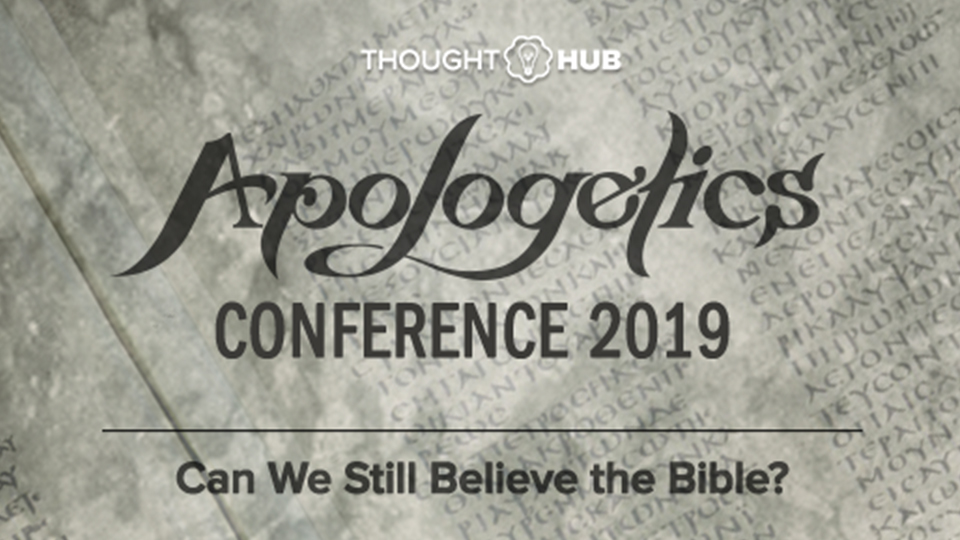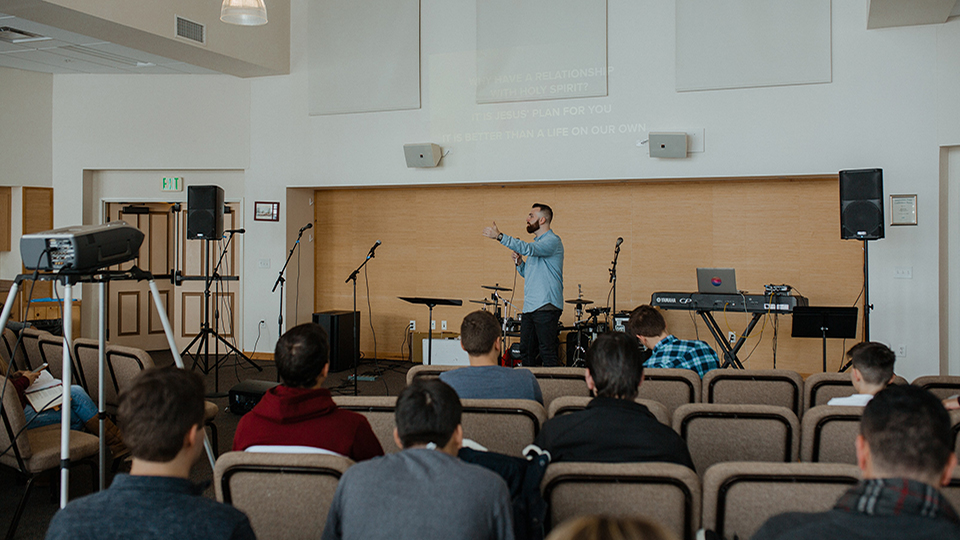
How do you defend the historical reliability of biblical scripture against individuals who insist on its inaccuracy? How do you respond to those who would question the church’s decision to include or exclude certain books from the biblical canon? In the first installment of this vlog series, Dr. Craig Blomberg addresses these topics by discussing the foundations of their discrediting views including variances in original manuscripts of scripture and the validity of such arguments.
TRANSCRIPT
– [MUSIC PLAYING] It’s my pleasure to introduce our guest speaker for our series. Dr. Craig Blomberg is a distinguished professor of New Testament at Denver Seminary. He completed his PhD in the New Testament at Aberdeen University in Scotland. He specialized in the parables and the writing of Luke- Acts and along with his teaching duties he ministers around the world. You might be interested to know that though he’s here with us today, later this year, He’s traveling to Ireland, England, South Africa, and Brazil as well as other places as well. He’s pretty busy involved in Bible translation and ministry as well. Dr. Blomberg is the editor and author of more than 20 books including some that we use here in our classes at Southwestern. But our focus today comes particularly from his work on the historical reliability of the scripture. His book- Can we still believe the Bible is what we’re kind of using as our theme for these next couple days. And so students what do you say to a person who comes to a view that says the Bible is so corrupt that that’s not even worthy to be trusted as scripture. How would you answer someone and these are, of course, all over social media questions like this. How would you answer the charge that the church has excluded the books that really should be in the Bible. Our guest has come to help us answer those questions if you would please give a warm SAGU welcome to Dr. Craig Blomberg.
Well, thank you very much. Dr. Bruce, sorry about all those exams and sorry to hear that you’ve some of you have had a book of mine inflicted on you. But I hope you survive. And how cool is it- I was picked up at DFW last night by a couple of your professors and they said, yeah apologetics is still kind of popular around here. And I went, wow, that’s nice. Defending the faith even if you’re the world’s greatest introvert and can’t imagine meeting somebody live and you talk to people online and they come from every walk of life and every belief or lack of belief and they may take the initiative to ridicule those of us who believe in Christianity and who believe the Bible is a reliable authority for us. I would not have imagined when I was in school that the topic, especially of today maybe tomorrow’s topic would be on somebody’s radar screen. But not today. We have called it rather boringly. How accurately was the New Testament copied and translated. When I was going to school if you wanted to avoid all the critical debates with liberal and unbelieving scholarship and take the safest possible topic. It was also the most boring. You went into textual criticism and you learned enough Greek and Hebrew not so much that you agreed to text, but you could read the footnotes. Who does that? And see the places where the manuscripts didn’t all say the same thing and learn how to make an informed judgment of what was probably the most original reading and the number of people interested in that or about as many people as I hear are in Dr. Reynolds Greek and Hebrew classes that I’m going to be meeting with later, he says we’ll be lucky if we have 12. That’s a good apostolic number. And then in 2006, a scholar by the name of Bart Sherman, who was on a pilgrimage running away from his upbringing, his conversion, his time in Christian universities and seminaries- he is still a professor of New Testament at University of North Carolina Chapel Hill wrote a book called misquoting Jesus. He didn’t create the title, the publisher did. And it was a brilliant idea at least for sales. Because everybody wanted to know, how did the church misquote Jesus? Well, the book’s not nearly as exciting as the title. It’s an introduction to the whole question of variance in different ancient manuscripts and how accurately was the text copied. For eight months in 2006, now I know some of you were seven then I think I did the math right. If you’re 19 now going on 20 but those are not best-selling books even with a catchy title. For eight months in 2006, Bart Herman’s “Misquoting Jesus” was on the New York Times top 10 best selling books of any category throughout the country. People’s faith was shaken. Why? because nobody ever talks about this stuff in church. And there’s no reason for that to have happened. I hope it’s not brand new news to anybody here that the first time someone wrote part of the New Testament- it didn’t look like this. Here is the oldest fragment we’ve ever discovered from the early second century of a few lines out of the Gospel of John chapter 18 but very quickly and certainly by the fourth century, we have entire new testaments written in all capital Greek letters pretty easy to decipher if you study even just a little bit of first-year Greek. That’s what the ancient manuscripts looked like. And they’re not all identical. Here is maybe the bombshell quote from Bart Herman’s book paraphrased. Some scholars say there are 200,000 variants, some say 300,000. Some say 400,000. As sophisticated as computer technology has gotten, We still haven’t been able to count them all. Let’s just play it safe and say there are more variance in the manuscripts of the New Testament than there are words in the New Testament. And suddenly everybody on their phones is gone. Omg-what’s going on. Well, I hope there’s a few people who can still do a little mental math. If that brings up horrible memories from high school, I apologize. But let’s say Herman’s biggest number is actually right. We ought to ask some questions about that number like out of how many manuscripts-just the two that you saw pictures of? Hardly. There are almost 5,700 manuscripts ranging from a scrap of a few verses to an entire New Testament in Greek from the pre-Gutenberg pre printing press era over the first 13 and a fraction centuries of church history. And there are about 20,000 additional manuscripts from that period of the New Testament translated into other ancient languages most notably Latin but other popular languages-you study them every day like coptic in Ethiopia. An old slavonic and Georgian. That’s the country, not the state of Georgia. And so forth. Well, now my mental math. If I round that off to about 25,000 divided into 400,000 that’s 16 unique variance per manuscript. That sounds a little more manageable. But still, what kind of differences are they? The vast majority are spelling variations. I don’t know if you believe in inerrancy of scripture. I personally do. But no one has ever said that in inerrancy extends to perfect spelling or grammar. After all,what is spelling or grammar other than the conventions of a society and the power brokers a.k.a. English professors at some point in time Who decides this is the way things should be spelled and if you spelled this way it’s wrong? Go back to British English. They would say just go back to English, since we’re the ones who corrupted and see the way people spell things just a few hundred years ago. That’s not included when we’re talking about errors. And the next most common is simply the use or non-use of little words that translate into “a” or “the” or “and” and don’t make a whit of a difference in the meaning of the text. Now there are some that are more interesting. The United Bible society’s edition of the Greek New Testament, possibly what the 12 people here study in Greek are using has about 1,500 footnotes from Matthew to Revelation and the average modern English translation has about 400 footnotes including versions on your phone if you know where to click and how to find them. And if you rely on a scripture on the phone you should make sure you do know how to find those textual variance. Read them, see what they’re like, most of them are comparatively uninteresting. But there are a couple that are big-12 verses in length. The so-called longer ending of Mark and the story in John 753 to 811 of the woman caught in adultery, but if I am reading anything other than the King James version, which is 500 years too old to know all this, I see in the text itself, the NIV the ESV has language that alerts me to the fact that the oldest and most reliable manuscripts don’t have this information. Here’s a picture of an actual text. You can see the words there in brackets. But those are the only two places where anything like that occurs. There are two dozen or so additional places where an entire verse as the scribes copied the text over the centuries was either added or omitted about half and half and occasionally those go to a verse and a half even two verses most of them are just about a verse in length. A fascinating one comes way near the end of the New Testament in first John chapter five and it’s one that the King James only folks love to throw out as how all modern translations are liberal. I John 5- I’m reading from the NIV but you could find the same thing in any modern translation. It says for there are three that testified the spirit the water and the blood and the three are in agreement. Well, I’m glad. I have no idea what they’re in agreement about. I’m not quite sure who the water and the blood are and how they testify but I’m glad they’re in agreement. But then I read my footnote and it says late manuscripts of the vault gate. That was the standard Latin translation for 1,000 years in early church history has after the word testify this addition- There are three that testify in heaven. The father, the Word and the Holy Spirit. And these three are one. And there are three that testify on earth. And then it goes on as we read earlier. A fascinating story for geeks like me is that the Catholic reformer Erasmus about 20 years older than Martin Luther a precursor to the Protestant Reformation creating the best Greek New Testament possible in his day when all Catholics were reading was Latin left out these extra words from the Latin because he could not find them in any Greek manuscript that he consulted and his Catholic superiors were outraged and said, you have to put those in. And he said you show me one Greek manuscript that has it. And I’ll put it in-bad move. The monsignor came back shortly afterward and provided the manuscript, which showed all the signs of having been tampered with. But Erasmus was true to his word and he put the words back in and the King James translators copied it and translated it, but I didn’t read you my whole footnote my footnote goes on to say after that extra little bit, not found in any Greek manuscript before the 14th century. Holy long period of absence Batman. And the 14th-century manuscript is found in is the one that was tampered with. There’s not one chance in while my dad used to say h.e. double toothpick that those words are original. And the King James only people say see here the liberals people that read the ESV-they’re deleting the Trinity. No, they’re not. They’re translating the original Greek and they’re not putting in what somebody added later in Latin and there are plenty of other passages that teach the Trinity. We don’t need this one. If you want to see another example, you’ve had time to copy down Acts 8:37. Sometimes it’s words that are left out. If I just pick one example here. I’ll pick the second one out. Luke 1:23-Jesus’ powerful words on the cross to the very soldiers who are nailing his hands to the cross beam and he says Father forgive them for you know not what you do. That was too radical for some early Christians. It was too radical for some Christians during a particular controversy where under persecution some fellow believers had denied the faith but mentally said, no, we still believe we’ll just outwardly say we deny it. And then after the persecution subsided they wanted back in the church and some people wanted to welcome them and others said, no, it’s too late. You’re damned forever and this group appealed to live. Luke 23:34-If Jesus can forgive those who are asking for forgiveness for those who are nailing him to the cross, surely he can forgive these people on the other side. We don’t want it. And we don’t want the verse either. But the vast majority of all of the examples even in English bibles just involve a handful of a couple of words. An interesting example in Mark 1:41 does Jesus have compassion for a leper or did he show indignation when he saw the leper’s disease and the damage it had done and the suffering that the man had. You can understand how a scribe would think, oh, that we don’t want Jesus to have emotions at least not those kinds. Compassion- That’s nice. But you know my Jesus is never upset. Yeah, well, let me tell you a story about when he went into the temple. Some of you know it, I think. And so several modern translations have determined that probably Mark originally said Jesus was indignant but based on a more common word in Mark’s gospel that he will use many times when Jesus is faced with disease or suffering scribes change that to compassion. It’s also important to debunk the notion as Herman said again in “Misquoting Jesus” that these kinds of handwritten text, This manuscript that you look at from a collection called the Chester Beatty papyrus in Dublin, Ireland, from about the year 200 give or take a few years. How far removed is that from what Mark wrote in the 60s of the first century and Herman says, “not only do we not have any originals, we don’t have copies of originals. We don’t have copies of copies. We don’t have copies of copies of copies. We don’t have copies of copies of copies of copies. we might have copies of copies of copies of copies of copies- say that fast a few times.
Want more ThoughtHub content?
Join the 3000+ people who receive our newsletter.
*ThoughtHub is provided by SAGU, a private Christian university offering more than 60 Christ-centered academic programs – associates, bachelor’s and master’s and doctorate degrees in liberal arts and bible and church ministries.



